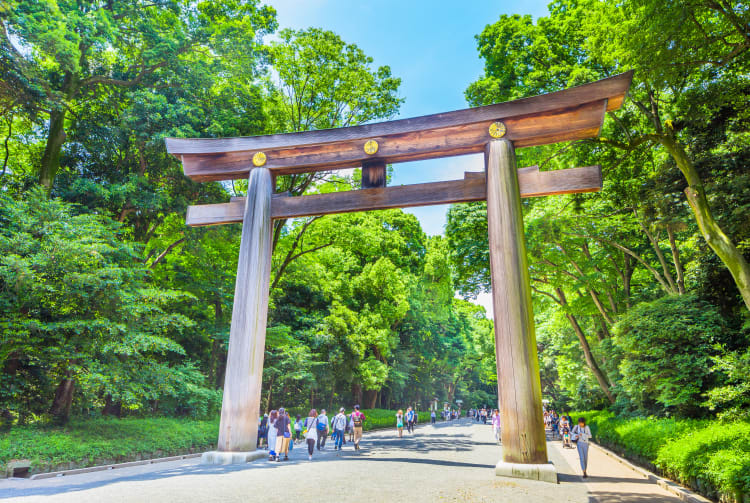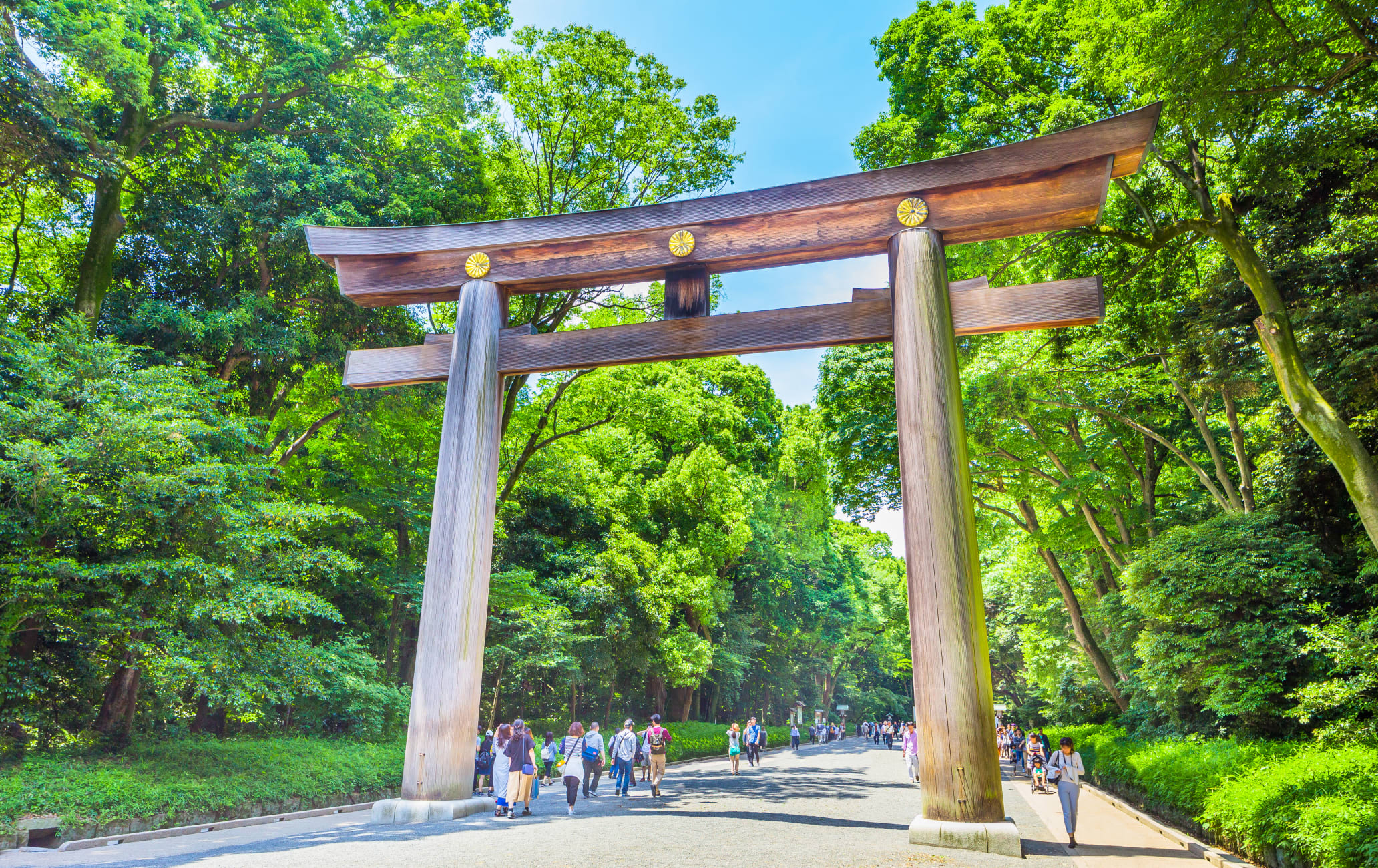Where Tokyo's modern pop culture and rich history meet
Surrounded by a lush green forest right in the heart of Tokyo , this Shinto shrine is dedicated to Emperor Meiji (1852-1912) and Empress Shoken, who led Japan to become a modernized nation.
You should prioritize Meiji Jingu as one of your first Tokyo stops, as any trip to bustling Shibuya or Harajuku pairs well with a quiet walk down the well-trodden paths to the shrine's main sanctuary.
Don't Miss
- Meiji Jingu Museum, full of articles used by or associated with Emperor Meiji and Empress Shoken
- The Inner Garden, a hidden "power spot"
- The shrine's Spring Grand Festival held from late April to early May
How to Get There
Meiji-jingu is located next to Harajuku Station and Meiji-jingumae station.
For JR, take the Yamanote Line to Harajuku Station. On the Metro, catch the Chiyoda or Fukutoshin lines to Meiji-jingumae. The shrine is a 10-minute walk from either location.
Quick Facts
The shrine celebrated its 100th anniversary in 2020
Over 100,000 trees were donated from all over Japan and planted by young volunteers to create the forest surrounding the shrine
A century of history
The shrine was built in 1920 to commemorate the virtues of Emperor Meiji and Empress Shoken.
Emperor Meiji led the nation in building relationships with some of the world's great powers. Like many other major sites in Tokyo , the shrine's buildings were destroyed during World War II but rebuilt following a public fundraising effort.


Walking out of the city and into nature
Passing Harajuku Station, you'll be led into the forest down a pathway to the main sanctuary. The short walk to the front gates is sheltered by towering trees that block out the sights and sounds of the city outside.
Passing under the torii gate marking the beginning of the shrine grounds, you'll find it hard to believe you're in the middle of one of the world's busiest cities. This tranquil, manmade forest of about 100,000 trees covers a gamut of different species donated from all over Japan.

Taking part in the shrine's traditions
In the middle of this urban forest is the main complex of Meiji Jingu. If you've just arrived in Tokyo , it's a great destination for your first shrine visit, with plenty of English signage to help you partake in traditional Shinto rituals, such as making offerings and praying at the main shrine, writing your wishes on an ema tablet, and purchasing a fortune or amulet.


The “power spot”
To the southern end of the shrine grounds is the expansive Inner Garden, an often overlooked but important part of the shrine. The iris gardens here were often visited by the emperor and empress, and one of the reasons Meiji Jingu was built here.
Although it requires an entrance fee, the garden is a beautiful labyrinth of scenic forest walks and traditional iris flower beds and features a classic Japanese tea house. Kiyomasa's Well, named after the famous lord who dug it 400 years ago, is considered a "power spot," a location where people visit to receive positive and restorative energy.
A center for festivals and events
Given its central location and rich history, Meiji Jingu holds many rituals and festivals throughout the year.
Beginning on New Year's Day, when nearly three million visitors swarm the area in the hope of a year's worth of good fortune, right up until the end-of-the-year ritual Joya-sai on December 31st, there's almost always something happening at the shrine.
However, if you're in Tokyo during late April and early May, be sure to come for the Spring Grand Festival, during which you can witness incredible performances of ceremonial music and dances. If there's not a ritual or festival on, there's a good chance a traditional Shinto wedding is happening at Meiji Jingu, so keep your eyes peeled for a chance to spot the procession.
Additionally, Yoyogi Park (next to Meiji Jingu) is also the host to a variety of modern festivals, food fairs, and performances all throughout the year.


























































